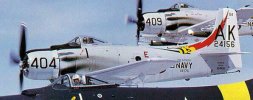UAVs are good for some things. They're better than meatbag-driven aircraft a few things; for most others, manned aircraft are the easier solution. Never mind robot strike/fighter...we once had a discussion about what you'd need in order to vertrep with drones, for example. Seems easy on the face of it - they already have drone helos sling-lifting - but you'd have to drop a ton of money and development work into getting the technology to where it's safe and consistently reliable to do at at sea. Why do that when you can already do it manned?
Long-duration ISR is a good niche for unmanned; anything else is debatable. The technology limitations are well-known, and pursuing solutions is really a matter of money and time.
The sticky point with a lot of bright ideas about manning the community is that drones have, and will continue to, operate in controlled airspace and in/from/around conventional airfields. There are a lot of reasons - safety, regulatory, practical - you can't just take Seaman Timmy and make him an AVO because 'these kids today with their damn XBoxes, make them fly the drones.'
Long-duration ISR is a good niche for unmanned; anything else is debatable. The technology limitations are well-known, and pursuing solutions is really a matter of money and time.
The sticky point with a lot of bright ideas about manning the community is that drones have, and will continue to, operate in controlled airspace and in/from/around conventional airfields. There are a lot of reasons - safety, regulatory, practical - you can't just take Seaman Timmy and make him an AVO because 'these kids today with their damn XBoxes, make them fly the drones.'

 . Many of the systems that you are talking about though are also internal ones that can't be jammed or hacked in flight. The big difference is that most unmanned systems rely on links for even their most basic tasks and those are the ones most vulnerable to EW, much more vulnerable. Only ones on a pre-programmed mission/track are going to be resistant to that sort of threat and those can only do a limited mission set.
. Many of the systems that you are talking about though are also internal ones that can't be jammed or hacked in flight. The big difference is that most unmanned systems rely on links for even their most basic tasks and those are the ones most vulnerable to EW, much more vulnerable. Only ones on a pre-programmed mission/track are going to be resistant to that sort of threat and those can only do a limited mission set.